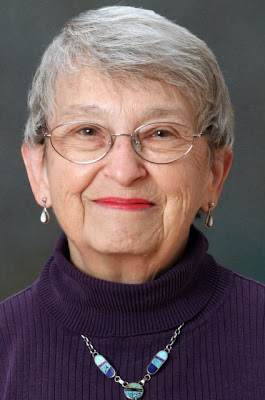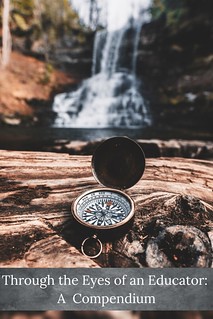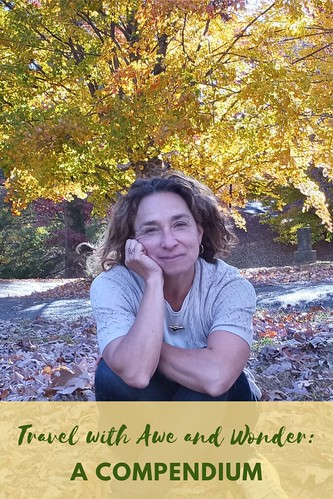Book Review: Quincy Tahoma: The Life and Legacy of a Navajo Artist
I have in my hands one of the most beautiful books I've ever read. It's a cultural study, an ethnography of an artist, a glimpse into another world, and a snapshot of a time period that is fascinating. The book? Quincy Tahoma: The Life and Legacy of a Navajo Artist, by Charnell Havens and Vera Marie Badertscher. It's filled with Tahoma's extraordinary paintings, and brings the artist to life with words, photos, and explorations of his cultural milieu. What draws an artist to portray his subjects? Why is one's cultural and personal background so very critical to his art? And, why are biographies SO compelling to readers - what is it about a life explored that draws us?

Authors Havens and Badertscher spent years (years!) finding and documenting original sources, traveling where Tahoma lived and worked, speaking with people who knew him. They dug deep into American Indian culture, the art world, history, genealogy, and personal stories to discover the life of this amazing artist - and pieced together a life that is both captivating to readers, and breaks new ground in thinking about art, history, culture, and the Southwest. When you delve into the book, it's difficult to decide where to focus first - the gorgeous art, or the irresistable story of the life of Quincy Tahoma. The authors truly have a firm comprehension of the life of Quincy Tahoma, history, place, and art - and have been able to connect them in an extremely satisfying book.


Charnell Havens Vera Marie Badertscher
~~~~~~~~~~~~~~~~~~~~~~~~~~~~~~~~~~~~~~~~~~~~~~~~~~~~~~~
BOOK GIVEAWAY!
Wandering Educators and the Quincy Tahoma Blog are giving away a copy of Quincy Tahoma: The Life and Legacy of a Navajo Artist. Please see the end of this article for details.
~~~~~~~~~~~~~~~~~~~~~~~~~~~~~~~~~~~~~~~~~~~~~~~~~~~~~~~

We caught up with both authors of Quincy Tahoma, Charnell Havens and Vera Marie Badertscher, to talk about the book, their inspiration and research,
WE: Please tell us about your new book, Quincy Tahoma: The Life and Legacy of a Navajo Artist.
Charnell: Quincy Tahoma: The Life and Legacy of a Navajo Artist, published in April 2011, is the authoritative biography of the important Navajo painter, Quincy Tahoma (1917-1956). More than 260 beautiful full color images of his paintings complement the dramatic story of his life and career as one of the best artists of his era. Many of the paintings shown in the book have never before been seen in public.
Tahoma’s life journey included adoption at an early age, disappointing love affairs, recognition of his unique talent, and a meteoric rise to fame in the Santa Fe art world followed by the destructive effects of alcoholism.
The research journey led us into scant and often erroneous historical documentation, so Vera Marie and I completed this compelling true story by collecting oral histories from more than 50 people, most of whom knew Tahoma personally. Many of the paintings shown in the book have never before been seen in public.
Quincy Tahoma: The Life and Legacy of a Navajo Artist is both a Tahoma museum in a book and a mighty fine read!
WE: What led you into researching and writing this book?
Charnell: In 1950, my Aunt Mary brought home five Tahoma paintings from her trip to Santa Fe and hung them on her living room wall in Ohio. They remained there for more than 40 years, and I grew up admiring them. There was something very special, very compelling about those paintings and I yearned to know more about the Navajo artist who created them. I inherited them in 1993 and shortly thereafter was transferred to Texas, which put me within driving distance to New Mexico. In 1995, I visited Albuquerque and Santa Fe to see what I could discover about this Navajo artist who created such remarkable scenes. That marked the beginning of the research journey, which remained on the back burner for three years due to my job responsibilities. I got serious about it in 1998, and Vera Marie (a friend from college days) joined me in 2000. From the beginning, I had envisioned writing a book that would pay tribute to Tahoma, and Vera’s joining me meant we could move from my dream to reality. Vera lived in Arizona (Tahoma’s birth state), had ties to the Indian art community, and was a free lance writer with excellent research skills. It felt like Christmas!
Vera Marie: When I moved to Arizona, I began to travel around the state and learn about American Indian culture. I had been a volunteer for a major Indian Art exhibition, but was not familiar with Tahoma. When Charnell told me about him, I was intrigued by the mysteries of his life, as well as his obvious artistic ability.
WE: How long did it take, to complete this book?
Charnell: From a research standpoint, about 13 years. Somewhat overlapping that, it took about two years for structuring and writing the first complete draft, plus another two or so to accommodate the process of reviews, editing and rewrites during which time we were in touch with publishers. Once the publisher was selected, it took almost another year and a half for the book to be released. From first research to publication was a little over 15 years.
Vera Marie: I would just add that since both of us had careers, this was a part time process, sometimes lying dormant for a few months before we plunged in again.
WE: What were the most fascinating parts of researching Quincy Tahoma's life?
Charnell: For me, it was meeting the wonderful folks whom we interviewed (oral histories) and whose own lives unfolded as they talked about Quincy. Sadly, several of those marvelous people are now gone and did not get to see the wonderful book they helped make possible.
Vera Marie: I agree. We met many wonderful people, building the history of a life through anecdotes from people he knew. It was always exciting when someone sent us snapshots taken at the time, or even love letters written by Tahoma. It was fascinating to me how much everyone who knew him loved Tahoma. From school friends, to old girlfriends, to police officers who had arrested him for drunkenness they all spoke highly of him and were thrilled that someone was going to tell his story. He must have been a delightful person.

drive-in theater with Tahoma painting, at Tesuque New Mexico. courtesy of Roberta Anglen
WE: Where did you conduct most of your research for this book?
Charnell: Physically in New Mexico, Arizona, California, D.C., and Oklahoma. Electronically, in our own homes. Bless computers, the Internet, and all the information repositories that are now online. Also bless those wonderful people at the other end of the phone or the fax who were so responsive to our inquiries.
Vera Marie: While I visited the states Charnell mentions, I spent more time (when not on the computer) in Santa Fe and pueblos in that area, than anywhere else, because that is where Tahoma spent most of HIS time. I wanted to not only go through official records, but also walk the streets and get a feel for the place that he lived.
WE: Artists are not only influenced by their own lives and cultures, but also the places where they live and paint. What were some of Quincy Tahoma's biggest influences?
Charnell: Certainly the Santa Fe Indian School and its Studio, which was started by Dorothy Dunn. Santa Fe photographer T. Harmon Parkhurst and artist friends like Pop Chalee could also have influenced his art.
Vera Marie: Tahoma's best friend was the Navajo painter Harrison Begay, who told us that while they painted together, they tried hard not to copy each other. Harrison and others who studied under Dorothy Dunn insisted that they learned as much from each other as form their teachers. Looking at the varied styles Tahoma tried out, I believe he was a sponge, soaking up new ideas everywhere. It is easy to see the influence of Plains Indian painters in Tahoma's work. Being exposed to artists form around the world at the San Francisco Golden Gate Exposition in 1939 when he was between his junior and senior years of high school really was a turning point where he thought of himself as a professional.
But you asked about place. Certainly the vivid colors in his paintings and the look of the landscape come directly from the Navajo reservation and culture. It is no accident that he was friends with two important photographers. He was able to travel with them and see the land that was no longer his home.
(We devote the whole last chapter of the book to today's artists who say they were influenced by Tahoma.)
WE: How have Native American/Southwest painting and art changed since Quincy Tahoma? How has he influenced this art and culture?
Charnell: This question could be the subject of another book!
Vera Marie: Shortly after Tahoma died, American Indian artists rebelled against a system that had imposed European values on their art. The American Indian Art Institute in Santa Fe replaced the older style of painting taught by Dorothy Dunn with bold, modern painting. Painters like Tahoma fell out of favor. But recently, younger artists are returning to "traditional" styles and collectors are once more interested in the legendary painters of the mid-twentieth century.
WE: Is there anything else you'd like to share with us?
We are sharing more "inside information" about Tahoma and about the writing of his biography at Tahoma Blog, and in an infrequent newsletter that people can subscribe to on our blog site.
For more information, please see:
We are giving away one copy of Quincy Tahoma's biography.
How would you like to win the book with these and more than 160 other full color paintings by Quincy Tahoma?
You have THREE chances to win a totally FREE copy of Quincy Tahoma: The Life and Legacy of a Navajo Artist.
Details:
1. Winner must be over 18 years old and a resident of the United States.
2. You can enter in three ways--but only one entry in each manner.
** Leave a comment at this post at the Quincy Tahoma Blog: http://tahomablog.com/2011/06/03/win-a-book/
** Subscribe to Quincy Tahoma Blog by Email [Note: Subscribe by clicking this link, or if you are already subscribed, make a 2nd comment below that says "I'm already a subscriber and want to win the book."
** Leave a comment on this article.
3. Contest runs from June 3, 2011 until midnight Eastern Daylight Time on June 11. 2011. The winner will be chosen via random.org, and announced at Tahoma Blog and at Wandering Educators on June 13, 2011
-

- Log in to post comments




















Lyn Belisle
I loved the story on the accompanying blog describing how the Santa Fe detectives would bring art supplies to Tahoma when he was jailed for drinking, as apparently he often was, so he could paint while he was waiting for release. This is a fascinating man - thanks for a great review. I look forward to reading more.
Elizabeth Kelse...
My God I must have a copy!! :)
Bradley Family
Jane Boursaw
I've been craving this gorgeous book since I first heard about it. Hope this is my big winning comment!
Family Entertainment Writer, Syndicated Columnist, and Head Honcho at http://www.reellifewithjane.com. Need family movie & TV content for your publication? Email me at jboursaw@charter.net
pen4hire
Good luck to all th entrants in the Quincy Tahoma book giveaway.
Vera Marie Badertscher
http://atravelerslibrary.com
Dr. Jessie Voigts
And the winner of this amazing book about Quincy Tahoma is Casey Barber. She left a comment at the QT site, and was the winner chosen for us at random.org. Thanks to everyone for commenting!
Jessie Voigts, PhD
Publisher, wanderingeducators.com